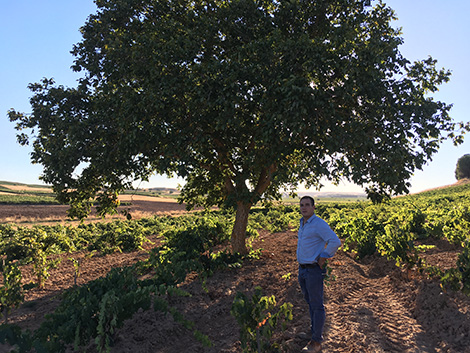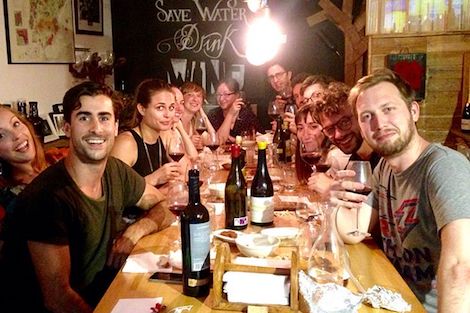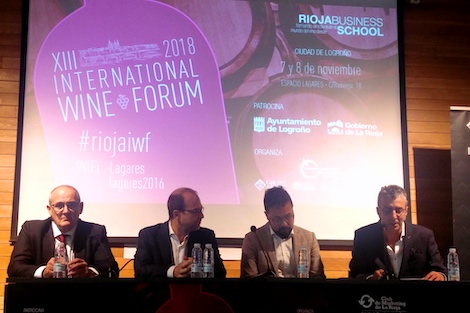
The large rugged hands of Francisco Barona reveal that he has worked hard in the fields since his youth. First in the family vineyards in Ribera del Duero, later at Château Pavie-Macquin in Saint Émilion and now in his own 32 hectares of very old vines dotted around the villages of Roa, Anguix, La Horra, La Aguilera and Pedrosa de Duero, in the province of Burgos.
Barona does not own a winery. Instead, he spends his money -and has gone into debt- buying some of the vineyards he always dreamt of. “Some plots go on sale just once in a lifetime,” he claims.
Rebel with a cause
Born in Roa, in the heart of Ribera del Duero, in 1984, Francisco Barona sees himself as the son of a humble grape grower. His father farmed and retained the vineyards he had inherited from his father but did not plant his own until the powerful reds of Ribera started to rival the best Riojas in the early 1990s.
At the age of 15, Francisco was a strong, robust young man, capable of working the vineyards. Given the chance, he’d rather jump onto a tractor than hammer away at the books. At Saint Gabriel school in Aranda de Duero where he took his Baccalaureate, he was considered a bad student. In fact, Francisco passed his exams in exchange for ploughing the monks’ vines. No wonder he refused to go to university; instead, he took a course in Viticulture and Oenology in Logroño. "I got top marks, but I didn’t really thought much of it," he recalls.
Luckily, the stars aligned to straighten out his career. Francisco’s father tended the vineyards of Alonso del Yerro at the same time as Gonzalo Iturriaga, current technical director of Vega Sicilia, worked there as winemaker. Iturriaga encouraged Barona to continue his studies in Bordeaux and got him a job at Château Pavie-Macquin (where Alonso del Yerro’s consultant Stephan Derenoncourt was also an advisor). Francisco soon found himself attending a vocational training course in Blanquefort. As his French was very poor, he got no marks during the first term, but by the following term, Barona became the second best in his class and was eventually accepted at the University. It turned out that he wasn’t a bad student after all -it was rather a matter of discovering what he enjoyed most.
Following some apprenticeships in California and South Africa, Barona returned home. “I was 24, did not know that much about wine, but I got a job as winemaker at Dominio de Basconcillos and started dreaming of making my own wine.”
Manvirgo hill
His first vineyard was a neglected, sandy-loam plot planted by his great-grandfather in 1908 and inherited by his aunt Carmen. It took Francisco three years to complete the purchase and bring the vines back to life. Now they produce “fine, opulent, structured wines.”
The jewel in the crown lies on the slopes of Manvirgo (see photo above), an imposing, solitary hill crowning the villages of Roa, Anguix, Quintanamanvirgo and Boada de Roa with extraordinary 360-degree views of the Duero valley. Its contour is featured on the understated, minimalist labels of Francisco’s wines.
“The mountain deflects storms so the vineyards are not affected by frost or hail. The wines feel vertical with distinct minerality,” Barona explains.
The first vintage of his flagship red Francisco Barona (16,000 bottles, around €30) was 2014. It blends grapes from different plots and villages, so as well as Manvirgo, it has the floral, violet notes of La Aguilera, the mineral expression of the limestone soils in Anguix and the evocative, floral character (“almost bordering camomile”) of the sand-stony terrains locally called “cascajillo”. Judging from the 2016 vintage that I had the chance to taste, the style feels fresher and more persistent than the standard in the area, yet it remains firm and ample.
Only a small part of the grapes grown by Barona make their way into this wine. He sells most of his production to well-known producers in the area like Vega Sicilia, Aalto, Arzuaga, Capellanes or Tomás Postigo.
Las Dueñas (roughly 1,000 bottles, €48) is a single-vineyard red sourced from a clay-sandy plot planted in Anguix in 1928 with limestone rock emerging 50cm below the surface. As the grapes tasted “completely different” and the loose bunches were suitable to ferment them whole, Francisco decided to ferment and age the wine separately. The 2014 vintage tasted firmer and younger than the Francisco Barona 2016. Given its high acidity, it is best to lay it down and wait.
Worshipping old vines
The striking freshness of the wines has a lot to do with the fact that he blends in minority grape varieties that can still be found in very old vineyards next to Tinto Fino (Tempranillo) -particularly Bobal (juicy and with thinner skins than the standard for this variety), Garnacha, and white grape varieties like Albillo and Jaén. They also help to naturally drop the high pH levels of Tempranillo in Ribera del Duero.
“I farm my vines as it was usually done in the old days,” Francisco Barona explains. “The sole difference is that I throw away the bunches that are not good.”
As well as farming organically, Barona believes it’s best not to remove shoots and to keep grape bunches on the shade. “Removing shoots implies wounds and stressing the plant,” he argues. “In order to ripen, the vine needs to burns acids, so if you expose bunches to the sun, more acidity is lost in the process and ripening will slow down.”
Vine pruning is also very important for Barona. Bunches are encouraged to grow outwards “so that the core of the plant is clean and airy” (see photo 4). “Skins are thinner when grapes ripen in the shade. If directly exposed to the sun, skins grow thicker and there is a considerable loss of aroma,” Barona explains. “The shade helps to preserve acidity and red fruit flavours.”
A consequence of not removing shoots is that vineyards cannot be farmed with tractors as they would break what he is so painstakingly trying to preserve, thus work is done by hand -that includes individual backpacks to apply treatments.
“My father, who is used to trellised vineyards, says I am crazy and so does my wife,” Francisco confesses. Although he does not like to talk about it, Barona is married to Beatriz Rodero, winemaker and second generation at Bodegas Rodero in Pedrosa de Duero, where Francisco makes his wines. They met while studying in Bordeaux, got married and have two children.
But Francisco Barona is a romantic swimming against the tide. “You cannot make good wines with tasteless grapes,” he argues adamantly. For my part, all the grapes I tried on a lovely September afternoon while visiting his vineyards tasted delicious.

Amaya Cervera
A wine journalist with almost 30 years' experience, she is the founder of the award-winning Spanish Wine Lover website. In 2023, she won the National Gastronomy Award for Gastronomic Communication
NEWSLETTER
Join our community of Spanish wine lovers






